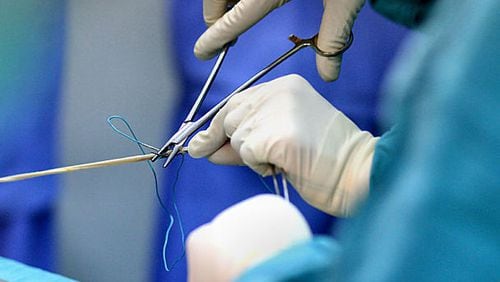As children increasingly participate in organized sports, doctors have begun seeing increased incidence of knee injuries among this population, raising concerns that youth athletes might be facing early arthritis.
"Yes, the numbers are up," Dr. John Xerogeanes, professor of orthopedic surgery and chief of sports medicine at Emory University, told the Atlanta Journal-Constitution.
Xerogeanes suggests this may be due to a combination of factors.
"There are more kids playing sports, so more chances to get hurt," he said, adding that "doctors and trainers are better at examining and diagnosing the injury."
"Maybe they are playing too much organized sporting events and injury is secondary to fatigue, etc. It is probably a combination," he explained.
» RELATED: If you tear a knee ligament, arthritis is likely to follow in 10 years
According to a chapter published this year in the medical book The Pediatric Anterior Cruciate Ligament, which discusses the management and evaluation of the ACL in young patients, "a dramatic rise in youth competitive athletic activity" is linked to an increase in ACL tears among children. The increase in younger and younger children participating in year-round training and competition also coincides with greater awareness of ACL injuries within the population.
Connection between ACL injuries and early arthritis
This trend has led to fears that young athletes are prone to developing arthritis at a younger age.
Dr. Mininder Kocher, an orthopedics professor at Harvard Medical School, told the New York Times earlier this month that the risk of getting arthritis within 10 years of tearing a tendon or a ligament in the knee is greater than 50 percent.
"It's like a dirty little secret," Kocher said. "It's not that anyone is covering up. It's just that it's not well-known."
However, Xerogeanes, who specializes in reconstruction of the ACL in athletes, has seen promising results in his practice and research.
"I've done large outcome studies to see how patients do with ACL reconstructions. These are longitudinal studies that are now going on greater than 10 years," he explained.
He said studies he's involved with have shown that "greater than 94 percent" of "football players who are starters in college return to the same our greater levels of play after ACL reconstruction."
» RELATED: Sports' cruel injury: the long road back from an ACL tear
Xerogeanes further pointed out that ACL reconstruction surgeries and rehab have greatly improved in recent years.
"All of the people who now have arthritis after ACL injuries had surgery when the technique of performing the ACL reconstruction was not anatomic and the rehab was not aggressive," he said.
When it comes to younger patients needing treatment for arthritis, Dr. James Roberson, professor and chairman of the department of orthopaedics at Emory, told AJC he hasn't seen an increase.
"I have not seen an increase in younger patients with arthritic knees.," Roberson said. "Most commonly [my patients] are middle age or older men with knee injuries from high school, college or professional knee injuries."
Similar to Xerogeanes' perspective, Roberson said he believes "management of these injuries is much improved compared to techniques used 20 or more years ago."
Roberson however said that occasionally a patient with "a very severe injury" may develop disabling arthritis in their 20s, 30s or early 40s.
"In general if this happens it is still much more common in later middle age," he said, but pointed out that a "younger patient may develop problems that prevent returning to their previous level of athletic activity."
While parents should certainly be aware of the risks to athletic children, Roberson and Xeroegeanes expressed optimism about medical advancements in treating ACL injuries. At the same time Dr. Roberson cautioned against knee replacements in younger patients, even if arthritis is developing.
"The younger patient with arthritic pain should maximize the nonsurgical options," he said, explaining that these include minimizing activities that consistently cause pain, maintaining muscle tone and conditioning by doing activities that provide a high level of exertion without increasing pain, keeping body weight within an ideal range and anti-inflammatory arthritis medications.
At the same time, Roberson considers total knee replacement to be "one of the most predictably successful major surgeries done for any problem," saying that it has "a high likelihood" of returning a patient to comfortable normal level of activity.
Finding the best treatment for ACL injuries
When seeking treatment, Xeroegeanes laid out several key recommendations patients should take into consideration.
He suggests patients find a specialist who does at least 80 to 100 ACL operations per year, saying "the more the doctor does the better he or she is at the operation." Patients should also look at the outcomes of previous patients, which should be documented for one to four years after the surgery. Anatomic ACL reconstruction is also the ideal procedure, not "the older transtibial ACL technique."
While all athletes face risks of injury, the severity of an ACL tear and how its treated will inevitably determine whether the patient develops arthritis.
"The goal of management of any significant knee ligament injury is to restore the normal kinematic stability and motion of the joint," Dr. Roberson said. "With more severe injuries that is more difficult to accomplish."
About the Author






